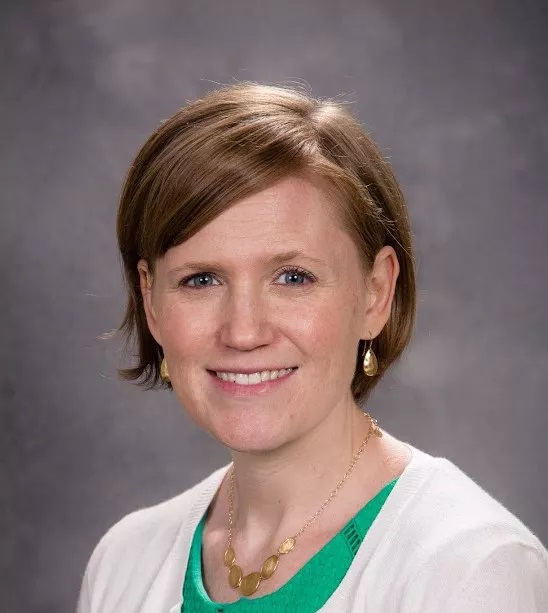👋 Welcome to Starting Early. Every other week, we spotlight new reports, useful news, engaging interviews with people doing important work, and interesting takes on maternal health and early childhood development issues.
This week’s issue is the first in a two-part series discussing Medicaid, the public health insurance program that provides much-needed coverage to about 78 million people in the US. Medicaid covers those with low-incomes and is often confused with Medicare, which covers people 65 and over regardless of income. Medicaid is the largest payer for health services in the nation. It makes a major contribution to health equity by addressing both individual health and the social factors that affect health.
“The health care system hasn’t been great at this historically,” says Elisabeth Wright Burak, senior fellow at Georgetown University. “A dedicated focus on prevention and early intervention can show results for children and their families for years to come.”
Read on and click the links to go deeper.
1. Medicaid — what is it and how it works
How it started: Medicaid was signed into law in 1965, after a decades-long fight to expand healthcare coverage in the US. In a 1945 message to Congress, President Harry Truman stated, “the benefits of modern medical science have not been enjoyed by our citizens with any degree of equality…Nor will they be in the future — unless government is bold enough to do something about it. People with low or moderate incomes do not get the same medical attention as those with high incomes. The poor have more sickness, but they get less medical care. People who live in rural areas do not get the same amount or quality of medical attention as those who live in our cities. Our new Economic Bill of Rights should mean health security for all, regardless of residence, station, or race — everywhere in the United States.”
- President Truman didn’t succeed in his goal of national health insurance, but the idea of bringing healthcare to more Americans and reducing disparities endured. Under President Lyndon Johnson, Medicaid was created to help people with limited incomes and Medicare was established mainly to help people 65 and over pay for healthcare.
Funding and spending: Medicaid is jointly funded by the federal government and states. The federal government reimburses at least 50% of a state’s Medicaid spending.
- In 2020, states and the federal government spent $661 billion on Medicaid. During the COVID-19 pandemic, Medicaid spending increased by 9.2%, reflecting the financial hardship faced by many people.
Benefits and coverage: Each state determines who is eligible for Medicaid and what services it covers, resulting in significant disparities across the US.
- To date, 12 states haven’t adopted the Medicaid expansion allowed under the Affordable Care Act (ACA), which enables eligibility for most adults with incomes up to 138% of the Federal Poverty Level (FPL) — $18,754 for an individual in 2022. Adopting Medicaid expansion in these states would make another 4 million uninsured adults eligible for Medicaid.
Maternal healthcare: Medicaid provides crucial coverage for pregnant women with low incomes; it finances almost half of US births.
- The good news: Medicaid postpartum coverage was expanded in 2021, giving states the option to extend coverage from 60 days to a year. New Jersey was the second state to do so, providing an estimated 8,700 mothers with postpartum care.
New Jersey adopted several changes to Medicaid policy to better support maternal and child health and reduce its high rate of maternal mortality:
- Added coverage for doula services, 2019
- Increased Medicaid reimbursement rate for certified nurse midwives to 95% of the physician rate, 2021
- Prohibited Medicaid reimbursement for medically unnecessary early elective deliveries, 2019
Click here for a comprehensive overview of Medicaid.
2. Value-Based Payments improve pediatric and long-term health

Shifting from quantity to quality: With healthcare costs constantly rising without measurable increase in outcomes in many areas of health, Medicaid has begun to adopt Value-Based Payment (VBP) models to replace Fee-for-Service (FFS).
- Under fee-for-service, healthcare practitioners are reimbursed based on how many services provided. Critics of this model argue that it encourages higher spending by incentivizing providers to perform many expensive services, while failing to address the quality of services.
- A Value-Based Medicaid program addresses these concerns by rewarding providers with incentive payments for the quality of care and keeping down costs.
Among the reforms brought by VBPs are:
- Greater physician accessibility
- Flexible, patient-centric health care
- Fewer costly tests and unnecessary procedures
- Lower incidences of surprise billing
Why VBP is better for children: More than 35 million children are enrolled in Medicaid, accounting for more than 43% of all Medicaid enrollees – including a disproportionate population of children of color, more than 83% of children from low-income families, and 48% children with special needs. A Value-Based Payment system presents the opportunity to significantly help the highest-risk youth and improve such social determinants of children’s health as nutrition, housing, education, to advance healthy child development trajectories well into adulthood.
Going upstream: Improving social determinants of health keeps costs down when addressing pediatric care, rather than the high-cost risk of diseases into adulthood.
An innovative approach: Oregon launched a health-related services program, which supports services improving community health and wellbeing that aren’t covered by the state’s Medicaid program, like nutritious food.
3. Medicaid innovations in New Jersey and beyond

We spoke with Kate Shamszad, director of the Medicaid Policy Center at the New Jersey Health Care Quality Institute about Medicaid’s role in improving healthcare delivery and addressing health equity. With Hackensack Meridian Health, New Jersey Medicaid, and other partners, NJHQI launched Integrated Care for Kids (InCK) in New Jersey, one of 7 states to receive funding for the model through the Center for Medicare and Medicaid Services Innovation Center.
Preventive community-based care for kids: “Our goal with NJ InCK is to focus on those who may benefit from extra support and to think about a model that helps us understand what each child’s unique health looks like,” Kate explains. “We take into account their medical conditions as well as their social and behavioral health. We put all that together to understand whether the family may be in need of additional wraparound support and if so, help them connect to additional resources they need through care coordination.”
Encouraging supportive family-provider relationships: “NJ InCK provides reimbursement for pediatricians to review a family’s HealthStory and have a conversation with the family,” Kate says. “The HealthStory is the opportunity for a family to share what their child’s social needs are, how they are doing from a developmental perspective, and if there are any risks or concerns in regard to their child’s wellbeing and social and behavioral health. The pediatrician discusses the HealthStory during a child’s visit, which builds a much stronger relationship. Filling out their HealthStory ahead of time provides families the opportunity to be thoughtful about what to share with their pediatrician. It opens up the opportunity for a conversation and, hopefully, a more supportive relationship.”
Adopting best practices from across the nation: “The Quality Institute does a lot of research on what’s really working and which states are being innovative,” Kate shares. “Oregon stands out as being on the cutting edge in thinking about the social determinants of health and health as more than just medical care within their Medicaid program. Medicaid programs, in general, have the opportunity to work in an innovative way. Because so many people in the US receive healthcare through Medicaid, there’s an opportunity to really make a big impact on the quality of care through new models.”
4. The roundup
Learn about the latest events, new funding opportunities, and jobs in the maternal and infant health and early childhood fields:
- A funders’ conversation on Early Relational Health: Join the Early Childhood Funders Collaborative and Einhorn Collaborative March 17for a discussion on advancing Early Relational Health policy. Hear from a panel of funders, including Atiya Weiss, Burke Foundation executive director. Funders and philanthropic organizations can register here.
- Build tools to tackle inequality: Apply by March 24 for the 2022 Blue Ridge Labs Fellowship, which focuses on expanding digital equity for low-income communities in New York City.
- Support birth equity: The Partnership for Maternal and Child Health of Northern New Jersey seeks people interested in becoming community-based doulas through Community of Caring: The Paterson Doula Cooperative. If you live in Paterson and want to support high-quality birthing experiences, complete this form to receive more information.
- Join the Burke Foundation team: We’re hiring a Program Officer to manage a new portfolio of workforce initiatives. Click here for the job description and information on how to apply.
